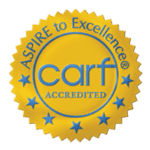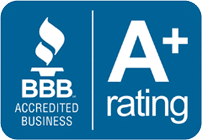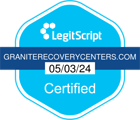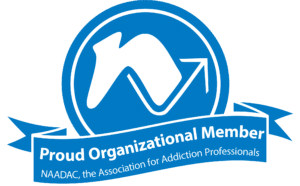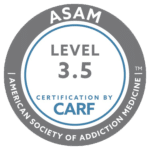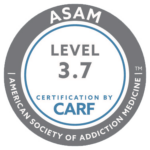Opioid Addiction Treatment Options
For many people battling opioid addiction, the first source of treatment is the emergency room or some other type of hospital. Unfortunately, this can be costly, time-consuming and the results aren’t usually long-term. Most hospitals don’t even offer any program for substance use disorder, and they instead evaluate the patient and send them to another facility that’s more capable of providing long-term care.
You can bypass the costly and time-consuming hospital visit by contacting a specialized rehabilitation center for addiction treatment. Both outpatient and inpatient centers use a combination of medications, group therapies and personal intervention to help patients overcome substance use disorder.
Still, you may be wondering which rehab centers and treatments are best for those specifically battling opioid addiction. Thankfully, there are many programs that focus on this type of substance.
What Are Opioids?
To understand the treatments catered toward opioid addiction, you must first know what opioids are, as well as what it means to be addicted to them. Answering these questions will clarify a clear description of your specific case while showing you the types of factors involved.
By definition, opioids are a group of drugs classified as pain killers. They function by producing feelings of pleasure and pain relief to your body. They’re also capable of changing the chemistry of the brain.
There are many different types of opioids, ranging from illegal drugs like heroin to synthetic opioids like fentanyl, oxycodone, hydrocodone, codeine and even morphine. The majority of opioids on the market are from doctor’s prescriptions. Prescriptions suffice until individuals become addicted. Then a patient may try to find another source.
Characteristics of Opioid Addiction
Given the powerful effects that they can have on your body, opioids can easily be misused. Consequently, your body begins depending on them, which then leads to the stage of addiction. Opioid addiction is presented as an extreme compulsive urge to use the drug. While the opioids may have started out to treat a medical condition, a substance use disorder could easily form over time.
Becoming addicted to opioids is common because of their highly powerful effects on the brain, and even using them as medically directed can lead to an addiction. You can become addicted to opioids after using them for several months. If you stop taking them, you’ll experience heavy withdrawal symptoms.
It’s important to understand that addiction and dependence are not technically the same. More specifically, a larger number of people may become dependent on opioids after they’ve been prescribed by a doctor. A dependency can develop rather quickly. On the other hand, addiction is more long term and affects a lesser number of users.
Addiction is characterized by a compulsive and continuing need for the drug. It’s more severe than dependence in that there’s a risk of overdose. Overdoses usually happen when high doses of opioids are consumed.
To be more specific, there are various different types of symptoms associated with opioid addiction, ranging from more physical symptoms, like cranky moods, nervousness, extreme sadness and/or frequent fatigue, to more internal and decisive symptoms, like getting in trouble with the law.
More generally, some other signs of opioid addiction are changing friends, losing interest in activities that you’ve once loved or choosing to spend time alone when you’re usually surrounded by people. Additionally, it may also involve poor hygiene habits, eating more or less than you usually do, changing sleep schedules or being overly energetic.
Withdrawal and Overdose
You’ll clearly know if you’ve become addicted to opioids if you experience withdrawal symptoms after you’ve refrained from taking the drug. Not everyone will experience the same symptoms, but these are some of the most common effects of withdrawal:
• Cravings for opioid drugs
• Anxiety or frequently irritated behavior
• Insomnia or unusual sleeping problems
• Abdominal pain that’s difficult to point to
• Vomiting or frequent nausea
• Diarrhea
• Tremors or severe shaking
• Feeling cold
It’s also important to become familiar with the symptoms of an opioid overdose. This will help you understand when to reach out for immediate help. An opioid overdose could lead to the following:
• Slow or shallow breathing
• Extreme sleepiness, which usually involves the individual not being able to open their eyes
• Inability to talk or open the individual’s mouth
• Blue skin or dark-colored lips
• Snoring or gurgling sounds randomly throughout the day
Detoxification
Kicking an opioid addiction will require going through detoxification. This is the process in which the substance is flushed from your body. Since opioid dependency and withdrawal symptoms can be so strong, detox is not easy. That’s why the process requires professional medical attention.
Types of Opioid Addiction Treatment
Not everyone experiences addiction the same way. That’s why there are various types of treatments. These include medicinal treatments, counseling or behavioral therapy, medication-assisted therapy or even residential treatment or hospital-based treatments.
Medicine Treatment for Opioid Addiction
There are three main medications that are currently being used to treat opioid addiction. They are methadone, buprenorphine and naltrexone.
More specifically, both methadone and buprenorphine are responsible for decreasing the withdrawal symptoms as well as the cravings associated with opioid addiction. They target the same spots in your brain that opioids are known to affect. These medicines take away the “high” feelings associated with the drugs.
They’re usually the most effective in treating opioid addiction because they help to restore the balance back to your brain that was removed when opioids took charge.
On the other hand, naltrexone is also effective in treating opioid addiction because it removes the high feelings that are associated with opioids. Naltrexone isn’t effective in getting you off of opioid drugs because of its inability to remove the cravings or withdrawal systems. Instead, it’s more recommended for preventing a relapse in severely addicted individuals.
Counseling/Behavioral Therapies
Counseling is capable of changing your attitudes and behaviors while you’re addicted to opioids. There are different types of counseling that you can engage in to cater to your specific preferences, but they are all centered around building your mindset to the point where you develop a healthy lifestyle and can commit treatment.
Individual Counseling
Most individuals will begin their recovery process with individual counseling. It involves discussing your personal experiences with drugs with a trained professional. There are also several different behavioral therapies involved with individual counseling.
These behavioral therapies include cognitive-behavioral therapy, motivational enhancement therapy and contingency management. Cognitive-behavioral therapy is focused on helping you realize patterns associated with thinking and feeling when you’re addicted. It helps to make you feel more comfortable coping with the transformation from addiction to independence.
On the other hand, motivational enhancement therapy is centered around motivating you to stick to your treatment plan and progress. Contingency management is focused on rewarding you for when you stick to your treatment plans.
Group Counseling
This type of counseling is more suitable for individuals who are more optimistic and open to talk about their overall experience with opioid addiction. It’s one of the most effective forms of counseling because it helps you to mentally feel supported during your recovery. It also demonstrates how you are not alone. During group sessions, you’ll be exposed to other people’s personal experiences.
You may even be able to take some advice or learn some new strategies for dealing with addiction. Many individuals find it extremely effective because you can talk to other people who have been through the same experiences. This is a stark difference from dealing with a doctor who may only speak from an educational and informative perspective.
Medication-Assisted Treatment
This type of therapy approach is more complex than the other types of treatment because it involves a combination of medications, counseling and behavioral therapies. By combining all of these different types of treatments, it can be more effective in curbing addiction. It offers a whole-patient type of approach to the addiction, so it can ultimately increase the overall effectiveness of the treatment process and recovery.
Residential and Hospital Treatment
Residential treatment involves you physically residing at a rehabilitation facility for a certain period of time. It tends to be the most effective since it’s centered around physically changing your life. You’ll get all-around care and a range of different services catered toward helping you overcome your opioid addiction while staying at a residential facility.
Why You Should Seek Opioid Addiction Treatment
It’s important to seek assistance if you’re battling an opioid addiction. Not only is addiction a costly lifestyle that can affect your personal relationships, but it can also be a matter of life and death. Nearly 2 million Americans abuse opioid drugs. Roughly 128 Americans die by an opioid overdose every day.
How to Start Getting Help
The first thing that you’ll have to do is come to terms with your substance use disorder. Understanding the problem is the first and most important step in the recovery process. However, it’s difficult to think about where to go from there.
It may be helpful to keep a diary of your progress during the recovery process. This will help you keep track and log your thoughts and feelings throughout the treatment. It may help you to read through your previous days when going through treatment so that you can actually see the progress that you’ve made.
It’s important to realize that very few people go through the recovery process alone. Quitting cold turkey is almost impossible because opioid dependency and addiction can be so serious. Rehab centers are staffed with professionals who have experience in addiction treatment. As mentioned earlier, some of the best programs are at residential facilities that provide inpatient services.
Granite Recovery Centers
Check out one of Granite Recovery Centers’ locations if a secluded environment and dedicated staff appeal to you. We offer plenty of residential facilities for those battling addiction, and two of our centers are Green Mountain Treatment Center in Effingham, NH, and New Freedom Academy in Canterbury, NH. Both of these rehab centers offer a wide range of treatments that can help you overcome opioid addiction. Residents are far away from temptations because our facilities are located in the serene mountains of New Hampshire .
Given the danger of substance use disorder, it’s important to get help as soon as possible. Take the first step and call a treatment center to learn more about the recovery process.

